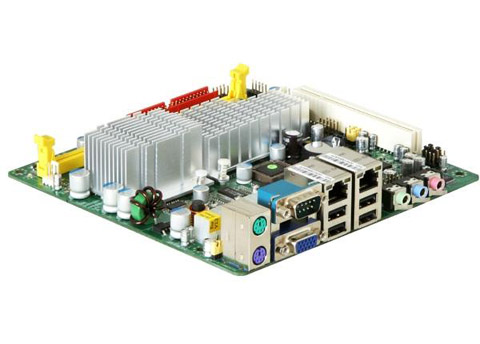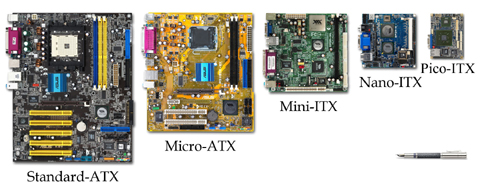Building a Ivy Bridge based Mini-ITX HTPC
In early 2009 I built my first dedicated HTPC based on the Mini-ITX form factor based on the Intel DG45FC motherboard (head over to the gallery for some photos).
The DG45FC was Intel's first Mini-ITX motherboard fully focused on the HTPC market and it was based on the GMA X4500HD integrated graphics processor (IGP). This promised HDMI support with both full LPCM support and hardware accelerated decoding of 1080p h264 material.
Intel initially struggled a bit with the GMA X4500HD drivers and they never got 24hz mode properly working. It also took the open source community quite some time to get DXVA support working but they eventually got there.
This machine has served very well over the first using Mediaportal and later on XBMC when it became available for Windows. However we recently decided to get another HTPC to use downstairs which gave me the chance to build a new Ivy Bridge based machine.
On paper the upgrade from the second generation Core 2 Duo platform to the Ivy Bridge platform does not offer many benefits, however in reality there's is quite a few improvements which aren't obvious at first sight. Anyway more on that later, here's a few photos of the build:
The empty Streacom F1C Evo case.
Mini-ITX and pfSense a perfect combination!
As I mentioned in my previous blog post my first encounter with the Mini-ITX standard was back in 2008 when I realized that my old trusty Linksys WRT54G router couldn't handle the 100Mbit internet connection I had just installed.
Finding a new router that handled 100Mbit full duplex and had a open firmware proved to be nearly impossible. So I decided to build a small computer and run one of the many different Linux and BSD distributions available out there targeted at firewall/router applications.
The result of this little "experiment" proved so successful that I haven't looked back since!
Enough talking lets cut straight to the hardware. I wanted a motherboard that had dual gigabit ethernet interfaces and was passively cooled. After doing some research and checking the compatibility of various network cards against Linux and BSD i decided on a Jetway J7F4 motherboard which has dual Realtek RTL8110SC gigabit network cards.
Bitten by the Mini-ITX bug
When I grew up In the eighties and early nineties a proper computer had to be rather big and bulky whether it was a desktop or a server didn't matter since the only motherboards and cases available where of the AT and later the ATX standard.
(Image courtesy of VIA Gallery from Hsintien, Taiwan)
Back in 2001 VIA released the Mini-ITX standard, enabling computers to be built using small 17*17 cm motherboards. Although the first Mini-ITX motherboards where quite underpowered and I still had the memory of lousy VIA chipsets fresh in my mind (remember the KT133 series?) so I stayed away from these boards for a few years but never letting them completely out of sight.
Then in 2006 when I finally got a proper 100Mbit Internet connection to my apartment I soon realized that my old beloved Linksys WRT54G router wasn't up to the task as it couldn't handle more than ~23Mbit of traffic in either direction.
As a direct result of this i started looking alternative router with an open firmware. When I couldn't find one i decided to build my own based on a the smallest, quietest and most power effective x86 hardware I could lay my hands on and guess what it ended up being a Mini-ITX machine!
After this I was truly bitten by the Mini-ITX bug and to this day I have replaced my whole server park with various kinds of Mini-ITX machines that I've built over the years.
Stay tuned cause in the coming weeks I'll be blogging about these Mini-ITX machines that I now use as router, server, HTPC and incremental backup server.
For a little "sneak peak" head over to my picture galleries where some of these machines can be seen along with some short info.
.jpg)


